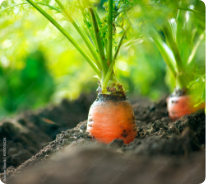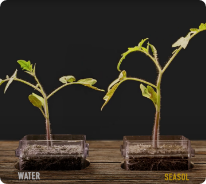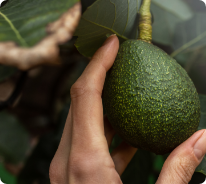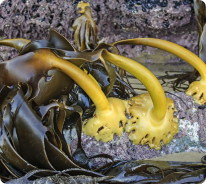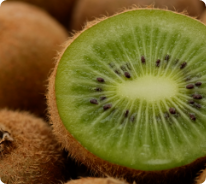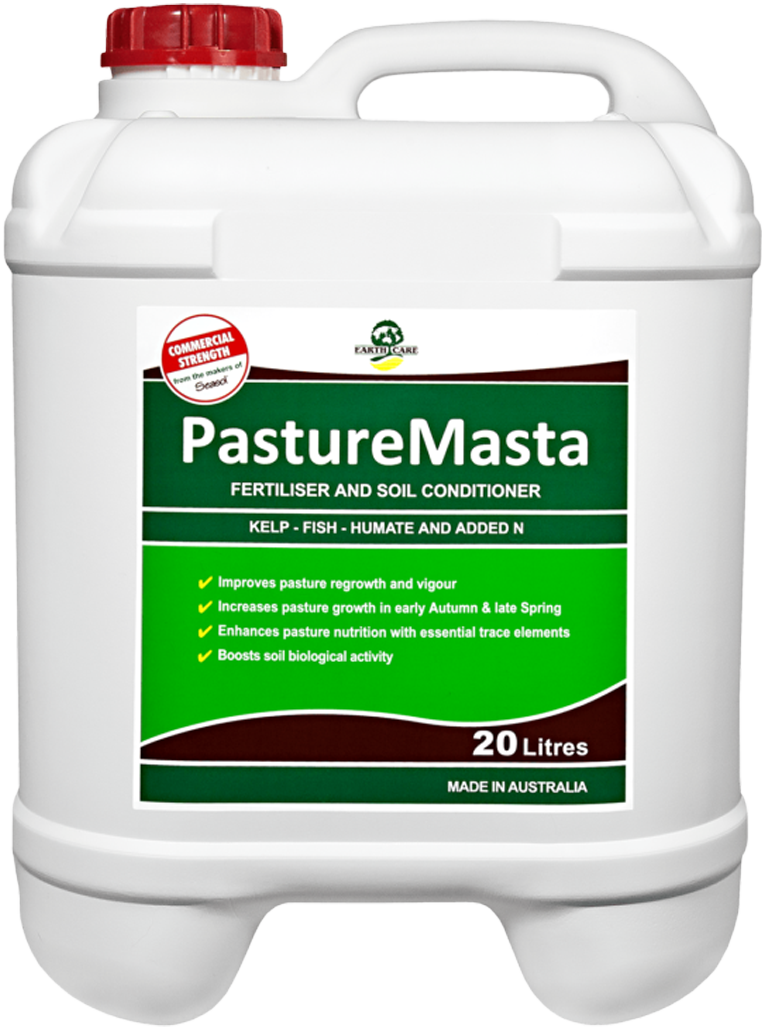Lucerne, with its many benefits is growing in popularity complementing New Zealand pastoral systems.
Advantages of lucerne
- High-quality compared to pasture and other supplementary feeds (refer to summary table below) lucerne has a high percentage of protein.
- A deep tap rooting plant allows it to extract water from low soil layers and is more tolerant to drier conditions than most pasture species. Overall, it is more effective at utilising available soil water at the end of winter and average rainfall.
- Late spring and summer growth and quality are significantly better than pasture.
- Suitable for both pasture and supplement makes high-quality hay used in dry summer and cold winter regions. It is increasingly ensiled as a protein-rich supplement for dairy cows.
Consistent crop growth
While under irrigation, lucerne performs very well with yields of 25tDM/ha. The beauty of lucerne is due to its superior root structure it grows well in dryland conditions typical of drought-prone eastern regions such as Waikato, Bay of Plenty, Gisborne, Hawkes Bay, Wairarapa, Marlborough, and Canterbury.
Lucerne’s consistent performance allows farmers to plan for setting stocking rates over the summer months.
Key performance production (beef & lamb papers)
Sheep production
- Lucerne gives a consistently high lamb growth rate (average 310 g/d over two years) and, along with a predictable stocking rate (approximately 10 ewes/ha) means that output per hectare can be optimised and predicted.
- Grazing on lucerne means that ewes are weaned at good weights and in good condition, making summer management easier.
- Ewes are in a more consistent condition (90-95% over BCS 2.5), lowering our need to put intensive management on the ewes to maintain good reproductive performance.
Total production
- Dryland lucerne provides 4 to 5 times the lamb production per hectare than dryland grass, while still using the same water resource (300-400 kg lamb weaned/ha compared to 80-135 kg lamb/ha).
- Dryland lucerne gives a similar output of lamb weaned as irrigated pasture. Lucerne/grass mixtures give a result in between dryland grass and lucerne, so the decision to use mixtures needs to be second to the use of pure stands.
Overall production summary
- Results overall found dryland lucerne provides similar output per hectare to irrigated pasture and 4 to 5 times that of dryland pasture.
- Lucerne/grass mixtures provided a result between dryland grass and lucerne.
- Lucerne is consistent from year to year, with low variability in stocking rate, lamb live weight gain and overall per-hectare
- Lucerne is a relatively predictable crop with the amount of feed we can grow based on early spring feed budgets.
Overall, the stocking rate data provides three key insights:
- The first is that the stocking rate on lucerne is like irrigated pasture and is 3 to 4 times that of dryland pasture.
- The increase in growth (from lucerne) provides flexibility helping to ease the pressure in dryland systems and aiding overall productivity.
- The consistency that lucerne provides. The stocking rate of dryland pasture varied by 30% between years while the lucerne varied by only 10%. The actual production from the lucerne can be accurately predicted based on the soil moisture available in late August, allowing an optimal stocking rate to be set.
Feed Quality e.g., the energy value of feed as measured by metabolised energy (ME) the higher the M/D value the better the feed.
Table 1. Comparison of feed quality between grazed crops
Growing lucerne in New Zealand
Spring sown lucerne
Lucerne is sown in Spring generally between the 3rd week of September through to late October depending on climatic conditions. Critical to timing is establishing a crop quickly to reduce the risk of a late frost stunting plant growth and that a good root structure is developed prior to soils becoming drier.
Applying Seasol
Seasol has been shown to improve plant establishment and stimulates the root growth needed for rapid development after planting.
Grazing management
Careful grazing management of Lucerne is critical to optimising the amount of feed that can be taken from a crop.
First grazing
- Recommended when 50% of seedlings have opened flowers
- Encourages deep tap root growth and increases root reserves for growth in the second year
Second/subsequent grazing
- Second grazing when the crop has re-grown to 30 cm high
- Careful management post-winter is key to encouraging strong re-growth to 30-40cm, allowing new bud development.
- Applying Seasol can help stimulate root growth for strong re-growth
- Grazing recommendations to break fence or set stock that allows the total herbage to be removed in 5-10 days
- The grazing rotation length is a compromise between yield and quality.
Presence of flower buds:
- During vegetative growth, approximately equal proportions of stem and leaf are produced.
- As flower buds become visible the proportion of stem exceeds leaf and consequently, total dry matter increases, but the quality declines.
- The appearance of flowers coincides with new vegetative basal-crown buds forming.
- The recommendation is to graze at 1% of flowering at a lower yield but higher quality feed.
Grazing length:
- In dryland situations to maximise post-weaning live weights, lambs are recommended to graze on sole lucerne crop for a minimum of 6-8 weeks.
- Fencing to five paddock rotation allows six to ten days of grazing and 24-40 days of re-growth.
- Ideally, a stock class system would consist of lambs that eat the leaf and top of the stem then followed by hoggets or ewes to clean up the remaining stem.
- The grazing interval is best shortest in the summer when warmer days and longer day lengths bring a more rapid onset of flowering.
- In autumn (Feb/March) grazing should be deferred until at least 50% of the stems have an open flower so that during this time a higher proportion of the sugar is maintained for the following year. Of course, if there is drought and no autumn rain, the plants will not be growing, and no reserves are built up.
Any regrowth in April/May should be left to grow until colder temperatures and frosts completely stop growth in winter.
Harvesting lucerne (balage and silage)
- Harvesting, the quality component of lucerne is in the leaf with high levels of protein and an MD (MJME/kg/DM) value of 11.5 or better.
- At the same time, the lucerne stem may have less than 15% protein and an MD value of less than 9.0.
- The optimal dry matter (DM) for baling is 80-85% (or 10-15% moisture).
- Given that most plants start with 15-20% dry matter (or 80-85% moisture) the importance of rapid moisture loss is self-evident.
- The different drying of leaves and stems means that the leaves dry rapidly, and the quality can be lost by conventional raking and baling methods.
- This loss is minimised by using a conditioner or crusher at cutting to squash the lucerne stem and increase the rate of moisture loss.
- Making silage from lucerne allows greater control of the forage quality and time of harvest and minimises losses at harvest.
- However, lucerne’s high protein content reduces the sugar concentration available for the ensiling process.
This process will benefit from lucerne being wilted for at least four hours (to 35% DM) and additives such as molasses, cereal grain or an inoculant may be used to accelerate the fermentation process.
Product benefits of Seasol for lucerne crops
More growth, early growth
Plant establishment and growth
Seasol, by stimulating root growth improves plant establishment and rapid root development after sowing.
Results: Applications significantly increased crop biomass in the first year compared to other fertilisers.
- Seasol consistently improved hay crop yield over two seasons and significantly increased dry matter production following four applications of PastureMasta (17.6 t/ha and 19.3 t/ha, respectively) compared to the growers’ normal fertiliser program.
- In terms of dry matter production per day, applications of PastureMasta resulted in greater daily growth of the crop than the growers’ program with numerical differences between the treated areas after four applications.
- PastureMasta significantly increased the number of bales of lucerne hay produced compared to the growers’ program at each hay cut timing in the first season and early during the second season.
- Over 52% more bales were produced after the second application of PastureMasta compared to the growers’ area under ideal weather conditions.
- Overall, four applications of PastureMasta increased yield as bale numbers by an average 20% in the 2017/2018 lucerne growing season and 6% in the following season.
- Bales were significantly heavier across two seasons following the use of PastureMasta, with a 12% (2017/2018) and 4% (2018/2019) increase in weight compared to other bales from the growers’ program paddock area.
- In terms of soil health, N-fixation was not detected in soil from the growers’ program whereas PastureMasta soils had excellent N-fixation ability indicating a good population of nodule-forming bacteria to provide N to the plant.
Tolerance to drought/heat/cold
Seasol significantly increases drought tolerance by increasing the innate capacity of plants to resist water loss. The same mechanism provides frost protection by reducing the temperature at which cells freeze.
Disease resistance
Seasol-treated plants have demonstrated reduced incidence and severity of disease impacts, a mechanism achieved through increased microbial activity as Seasol is a food source for beneficial microbes building their numbers and diversity.
Disease resistance
Seasol-treated plants have demonstrated reduced incidence and severity of disease impacts, a mechanism achieved through increased microbial activity as Seasol is a food source for beneficial microbes building their numbers and diversity.
References

